The Maker Challenge is a series of challenges presented by the Meadows & Makers podcast - such a fabulous idea! This week's challenge asks Steemians to show their making of a hydroponic or aquaponic set up, and you can find the challenge here. I love a practical project challenge, as we're project people, and this one couldn't have come at a better time as we do the finishing touches on our wicking beds. I asked @jackdub whether they count, as they use water creatively and innovatively to grow stuff (in our cases, herbs and vegetables) and he agreed they ABSOLUTELY count, so, yay! I know some of you have been eagerly awaiting this post regardless of it being a contest entry, so I do hope you enjoy it.
A little while ago I posted here about our concerns about a dry summer and possible drought, and for the last few months, I've been researching wicking beds as a way to manage water better. They're designed to prevent evaporation and the water in the reservoir below 'wicks', or draws up via capillary action', to the soil above. They've been used in desert environments with much success, and are perfect for a section of our garden where the grape vine and a gum tree suck the nutrients from the soil.
Here you can see the finished product - 2 food grade IBC containers, cut in half, surrounded by some old red gum to hide the ugly plastic from the house. I'll run through a step by step of how we made them below, and include a video 'run through' of what everything's looking like one week on. My husband is hoping we now have 'enough' wicking beds, but with 5 acres to fill, he has another thing coming!
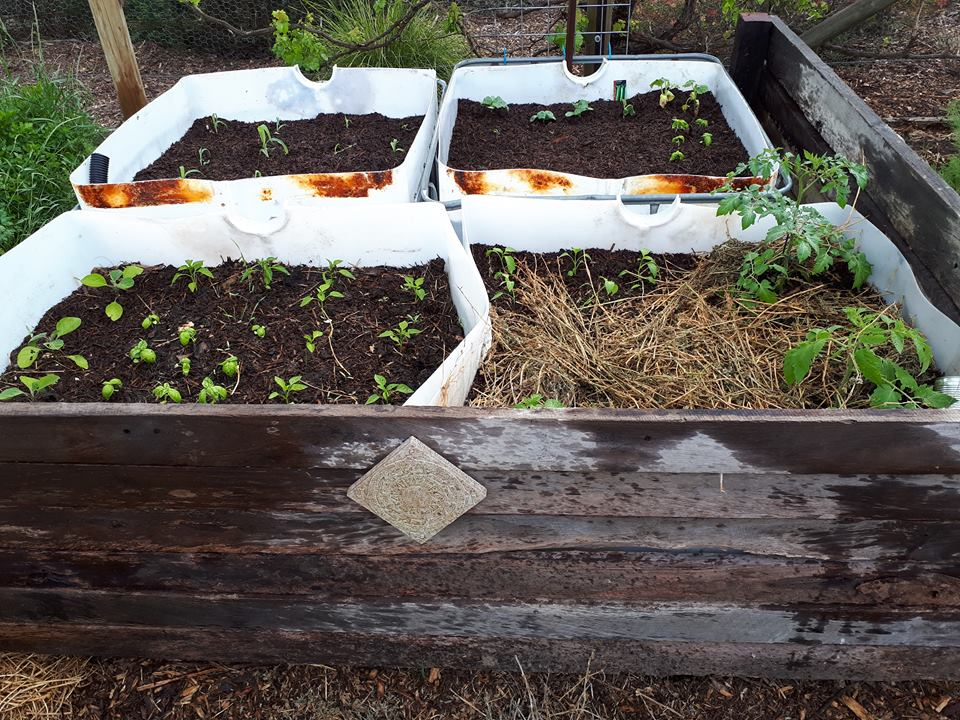
Here is a rough sketch of the set up:
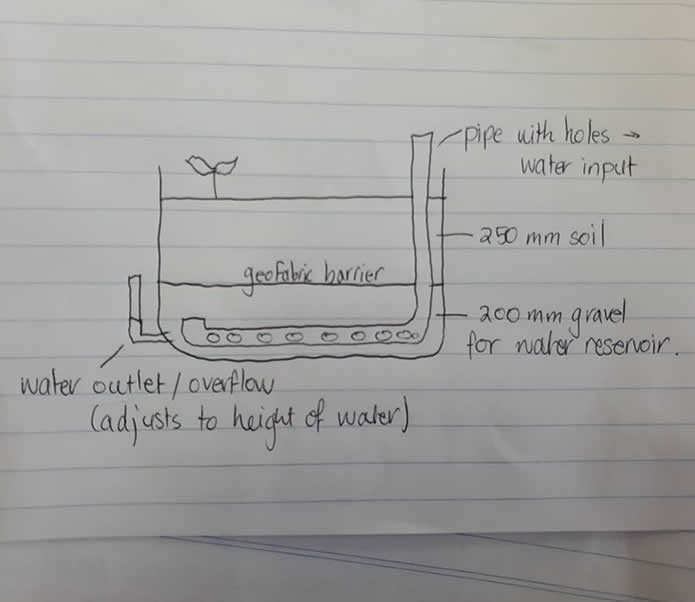
Step 1: Cut the Bulk Containers in half
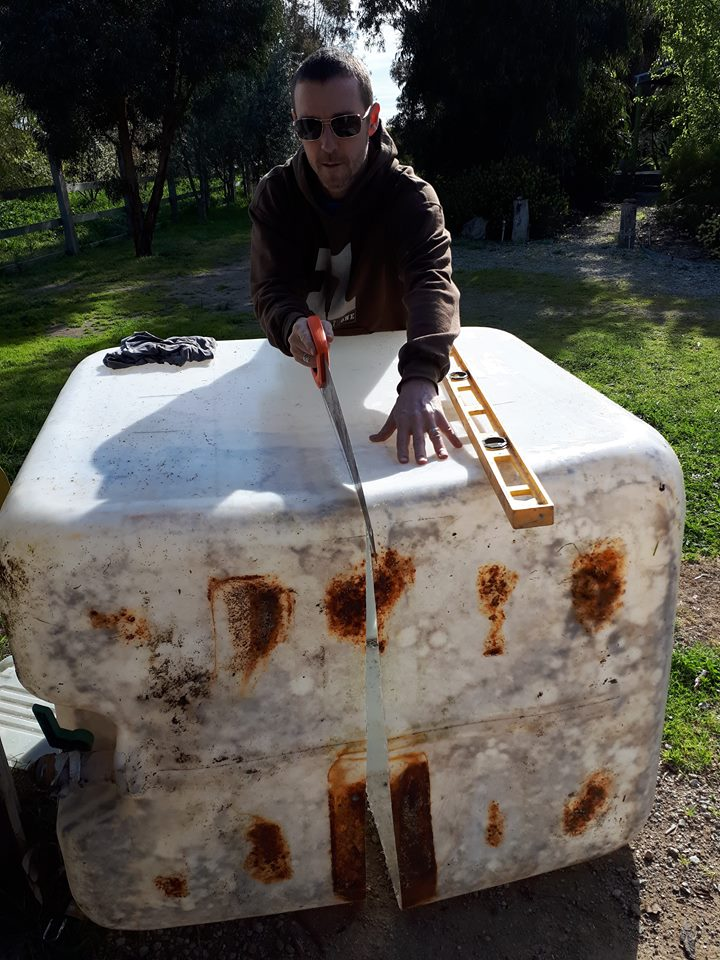
Alternatively, find a suitable vessel. It'll need to be about 400 - 500 mm deep - 200 for the reservoir, and 200 - 300 mm for soil. No more soil than that as it just won't 'wick' that high. With the IBC's, we sandpapered the edges as the saw cut them quite rough.
Step 2: Tank Fitting
Our tank fittings are quite fancy, and to be honest, quite pricey. I do imagine you can make a water outlet at the 200 mm mark simply using a pipe at that level. However, the benefit of using the tank fitting is that I can place it quite low, and use a longer pipe to adjust the water height, thereby having the ability to drain the tank completely. Here, we use 25mm tank fittings which are siliconed in place and then left to dry.
The photo on the left shows us drilling into an old trough for my strawberry wicking bed, as I didn't take a photo of us drilling through the IBC! The photo on the right is the tank fitting being prepped with silicon.
Step 3: Water Pipe
Anything will do here - white agricultural pipe with an elbow and holes drilled in will work just fine. We had this pipe lying around, so simply drilled holes in it. Hold this in place with bricks so the gravel doesn't displace it. One end of the pipe comes out and up above the level of the soil - this is where you will pour the water from a hose, so you'll also need a tin or covering of some description to stop the mosquitos entering and breeding in the reservoir.
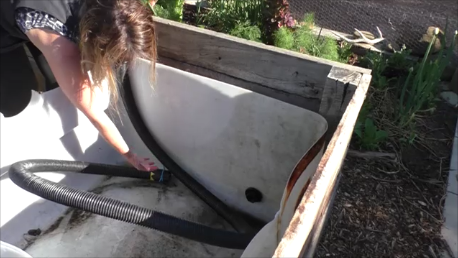
Step 4: Gravel
We had some plumbing screenings left over from another job, so we used those. The water will settle in the gaps between them. I've read that others use sand, or wood bark, although I imagine wood bark would eventually decay. Each half IBC used about 2 - 3 wheelbarrows worth - hard and heavy work on a hot day, but I'd got new boots so I was a little stronger than usual.
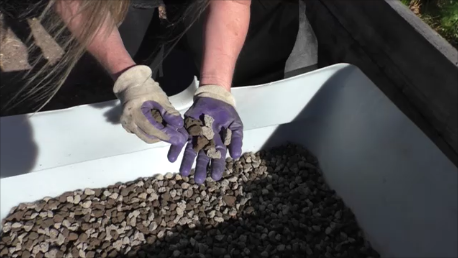
Step 5: Geo-fabric
There needs to be a barrier between the gravel/water reservoir and the soil, to stop the soil falling into the reservoir. We had a roll of permeable weed matting, but you can use shadecloth or other fabric too.
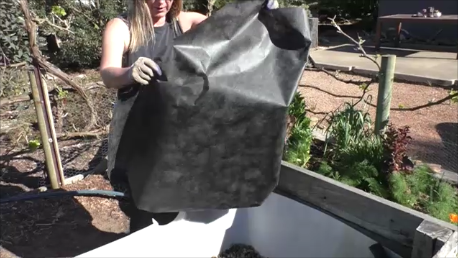
Step 6: Soil
I had enough compost to fill two IBC's, but had to order in some more mushroom compost for the other two. Packed down, it's about 4 wheelbarrows per IBC. Each have about 250 mm of soil in them - any more and the water won't 'wick'.
Step 7: Extra pipe, and watering
I cut extra pipe so we can adjust the height of the water in the reservoir, as pictured, and filled them up til the water overflowed from said pipe. If planting straight away, note that it takes a couple of days for the water to wick, so you'll need to water the plants in to begin with. After that, you won't water for days in the hotter weather, weeks in the cooler weather!
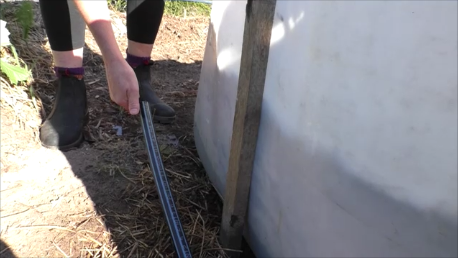
I have done a control planting where we planted aubergines (eggplants) in compost outside of the wicking system, and the ones in the system are doing much better. I have selected smaller or dwarf varieties to go in the beds (yet still chosen for their high yield) so I can fit more in, and I'm presuming because they have a constant water supply, I can plant them a little closer together, especially since they are in such nutrient dense soil. I planted lebanese cucumbers at the back so they can climb up, saving more space, and pumpkins in the corner so they'll trail up and out of the beds and onto the garden.
Video Update on the Wicking Beds: One Week On
Whilst I didn't video the construction of last week's IBC wicking beds (we didn't know about @jackdub's challenge!) I did a video walkthrough of the set up and what's happening one week on. The strawberry bed wicking trough has been in for about 3 weeks now - you can see strawberries, whereas the strawberries in the ordinary bed aren't yet fruiting.
https://youtu.be/ncqMwxhzdC4